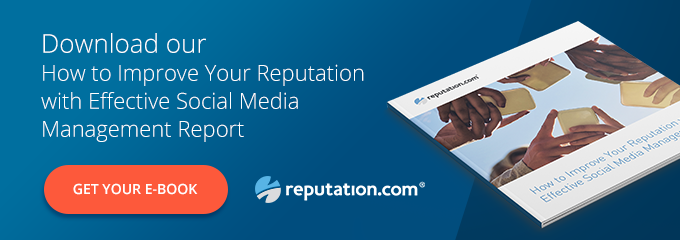Q&A with Andrea Fryrear: Agile Marketing Expert, Author & Keynote Speaker
Reputation Staff Writer


Andrea Fryrear is president and lead trainer for AgileSherpas, a company that trains marketers in the powerful methodology of Agile marketing. She provides coaching and delivers keynote speeches on the topic, and is also the author of Death of a Marketer, an influential book on the future of Agile marketing. Andrea was named one of the 50 Most Influential Women in Content Marketing and one of the 50 Top B2B Marketing Influencers by Top Rank Marketing, as well as one of 25 Content Marketing Thought Leaders You Should be Paying Attention To by Relevance.
Agile originated as a method of building software, aimed at engineers. How did it evolve to become a marketing methodology, and why does it work?
Even though software development and marketing do different types of work, marketing is becoming a more digital profession. So we’ve started to break from old-school project management in much the same way as developers did. Now we’re turning to the same kinds of work management methods that fix engineering problems because we’re having similar issues, even though we do very different work.
Has this adaptation attracted different types of marketers to the field? Do we have more right-brained marketers as a result?
I think that’s true in some cases. The profession has started to attract more analytical types, but I don’t think you can get away from the creativity that makes certain kinds of marketing work like magic. But there has to be a balance. You have that brilliant brainstorm that you can act on in the moment, but then you also have to be able to test it and validate it. It’s more a balance of the right- and left-brain type stuff.
You see a lot of demand today for marketing “unicorns” — those who can do email, social, etc. Is that what marketing managers should be looking for?
It’s good to have a cross-functional person. But every marketing discipline is becoming more specialized. You need subject matter experts in different areas and people who can support them. Fitting the right people into the right positions is like a jigsaw puzzle — a balance between a cross-functional person and a specialist. The phrase that’s gaining popularity is “specializing generalist.”
Do people already know Agile concepts when they call you for consulting services? Or do you start with them from square one more often?
They often have misconceptions. They think you can start changing your practices to adopt Agile behaviors, like have a daily standup meeting or build a wall full of sticky notes. But you have to go back to the Agile mindset and consider why these frameworks exist.
It comes down to being able to release smaller things more often and iterate on them intelligently and deliberately. We have to be comfortable releasing things that are not a ginormous big bang campaign like we’ve been comfortable doing for a long time.
The flip side of that is it still has to be high-quality. You need to get something effective and high-quality out the door quickly, then revisit it often — every couple of weeks. That’s the core of Agile, not so much the practices that help manifest that ideal.
And that’s really what helps marketing make the transition from traditional Agile for software development to an Agile that fits the way that marketers work. We don’t have to follow the strict framework that a lot of development teams would follow. We can be more flexible and adaptive, as long as we still understand why we do what we do, and we’re not just going through the motions.
Is it hard to get used to the pace of Agile?
Expectations of what’s good and fast have changed a lot lately. You can feel some industry veterans’ trepidation. They’re the brands’ stewards, and they feel strongly about striking that balance between fast and high-quality.
But we have brands such as Amazon that do dozens — if not hundreds — of experiments per day to deliver a better customer experience. And that’s what people expect. They don’t care if we’re a slow-moving B2B brand; they want that same speed and responsiveness they’re accustomed to.
What if when you speed up the pace, you make a mistake? Is it less memorable in today’s fast-paced world? Or is it still damaging?
People’s memories are a little shorter now. And the digital nature of marketing makes iteration possible in ways that it simply wasn’t before.
A giant billboard or a print ad in a magazine is not easy to walk back. Huge issues with big bang campaigns are still out there; they don’t go away. That’s the dangerous side of digital — it’s out there somewhere forever.
But components of some huge missteps like the Dove soap ad could have been tested in an Agile way. Rather than waiting for that giant campaign to be done and releasing it all at once, they could have tested the idea in a safe space. There are lots of ways to feel out your audience before you do that giant release that blows up in your face.
When you speak to groups, how do you engage them and convince them Agile is the way to go?
I talk about the enormously painful parts of being a marketer right now. You’re pulled in a million different directions. There are so many interruptions throughout the day. It’s difficult to focus. Everybody needs stuff from you right now. Everything’s on fire. It’s all stressful and difficult, and we work too much. I tell them how much better life can be on an Agile marketing team; the specific resolutions that Agile has for these pain points.
I tell people I have a way to make their lives better that will allow them to do their jobs better, become more connected with their audience and improve their chances of getting a promotion. It helps the doubters see this is not just one more meeting they have to go to every day.
Agile can be a nebulous concept and difficult to explain. Have you seen others explain it so that the audience’s eyes glaze over and they leave not just unconvinced, but maybe even fearful of Agile?
Some people just don’t have enough information to teach the concept. They believe if you’re using Agile, you need to do Scrum. They don’t give any other options, because that’s all they know. Usually, it’s someone who has worked on a single Agile team, or they’ve read a book and they think all they have to do is follow the steps.
But those steps were written for software developers. When marketers hear or read that, they try to follow the steps, and when it doesn’t work, they give up. That’s frustrating, because marketing needs Agile. And if we approach it in the right way, it works for everybody.
How have you approached as you establish your reputation?
When I first started talking about Agile marketing, I was working on an Agile team and trying to figure it out myself. I came from an authentic place of asking questions and sharing my own best practices. I was not trying to be salesy or get people to book me as a consultant.
Since I have started consulting and training others, I try to imagine what I would say if I was not a consultant, if I was just trying to share good information with others who have similar interests.
Agile marketing is an emerging topic — it’s still in its infancy. The more people who hear straight talk about how it works, the better. I talk to anybody who will listen.
My book and in-person workshops are enormous and powerful, and we do a state of Agile marketing report every year in which we ask, “What’s the biggest barrier holding you back from being more Agile as a marketer?” They always answer, “Education.”
We try hard to provide different avenues for people to educate themselves, whether that’s the resources we share on the website, me going on a podcast, scheduling live events or live certification training. We want people to get educated and see Agile as a method of improving their unique situation instead of a rigid checklist they have to follow.


